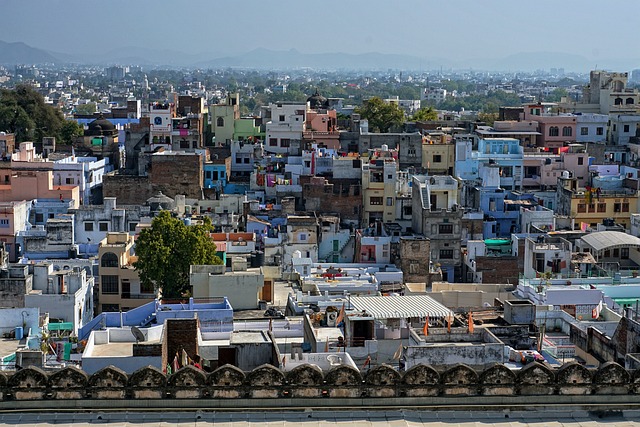Gender equality and women empowerment are human rights that lie at the heart of development and the achievement of the UN Sustainable Development Goals. Despite the Constitutional guarantees, women have been under-represented in the policy domain. In India, only 14.5% of the parliamentarians are women. It has led to paucity in policies pertaining to women centric issues, and it is particularly apparent in the housing sector as social, political and legal factors combine to create huge barrier in accessing the housing market for women. Additionally, more than 35% of the total urban population resides in informal housing with minimum or no access to basic amenities, insecure tenure and physical inadequacies. The situation exacerbates for women, and more so for single women due to financial struggles and the possibility of eviction. As the odds of accessing formal housing option becomes limited for women – due to the huge disparity in income, societal taboos, lack of women centric policies and shortage of affordable housing options – the already marginalised gender gets further marginalised.

Policy Inefficiencies in the Housing Market: A Gender Perspective
The need to capture the housing market for women has previously been promoted with a myopic attitude. It is so, as inter alia policies and interventions have not been indicative of the gender struggles and in most cases lacked a holistic approach towards promoting gender specific and basic infrastructure laden housing market.
According to Census 2011, there are 27 million women headed households, constituting about 11% of the total households in the country. From 2001 to 2011 there has only been 0.5% increase in the overall ownership of women. It is necessary to reiterate, however, that the trend undermines the difference between ‘belongingness’ (unaccountable) and ‘ownership’ (legal). The prevalence of the notion of subservient Indian womanhood along with social stigmas and pressure creates an invisible but obvious gap between their ‘actual role’ as legal owners, entitled to take decisions, and the ‘expected role’ where the concept of entitlement gets blurry. Moreover, previous policies like the JNNURM and Rajiv Awas Yojana have been focusing on creating new houses for a married unit, with incentives ranging from tax rebates to lower interest rate on loans for women buyers while failing to capture the market particularly for single women. They also lacked in quality construction and trunk infrastructure which further exacerbated the policy insufficiencies in the housing market for gender specific issues.
In a thesis study conducted in Delhi NCR, by the School of Planning and Architecture, Delhi, almost 80% of the women respondents prioritised affordability, transport accessibility and proximity to work as major indicators that influence their decision while looking for accommodation. Moreover, women’s travel is characterized by trip chaining i.e. combining multiple destinations within one trip. This, coupled with the fact that women in the country earn 19% less than men, creates a juggernaut of additional financial problems for women when seeking the housing market.
Gender Ostracism in Urban Housing Sector
In most urban areas, especially in the metros, the spectrum of affordability in the housing market leaves one with limited choices. This has widened the gender disparity in availing market options. Currently, the Indian housing market provides three types of accommodation, namely: rentals, hostels and owned. With a meagre income, shuffling between jobs for better opportunities and lack of collateral to opt for loans, women tend to seek rentals and hostels over owning a house.
To shift the trend and promote higher ownership rates, the government came up with schemes like the Pradhan Mantri Awas Yojna-Urban. It was observed that to avail the subsidies under PMAY-U, such as the interest subsidy on home loan and direct subsidy on individual house construction, people required title deeds. This in most cases become a bottleneck for women consumers as patriarchal dominance in property rights leave no scope for women to access these incentives.
Moreover, the interest subsidies borrowed by women in the LIG or EWS category under the Credit Linked Subsidy Scheme are mostly insufficient, especially for private housing in Tier- 1 cities due to enormous housing rates. Besides, there are about 11 million constructed houses in the country which are vacant according to the 2011 Census. The number is bound to increase, considering 23% of the houses under PMAY-U are also unoccupied. The government’s initiative to address the issue through converting the vacant houses into Affordable Rental Housing Complexes has definitely been a pivotal step in housing market parity. However, it still does not resolve the issue. Land scarcity and land values have proven to be a major drawback in promoting this. The urban saturation and surging land values in the city centre has led the government to build affordable houses in urban fringes, disregarding factors like proximity to workplace and accessibility to affordable transport options. So, if the vacant houses were to be converted to rental housing, the issue will still remain the same.
Presently, the housing sector for women is being driven by a speculative market which is an outcome of juggernauts of knee jerk policies. There is a need to leapfrog from a conjectured housing market to a need based housing market, where gender and socio-economic aspects find parity. In this regard, exercises like ‘needs assessment’ and ‘design thinking’ become crucial, where a non-linear, iterative approach helps in understanding the users and their needs. Moreover, to restrict ‘feminisation of poverty in the housing market’ especially in this rapidly changing dynamics of gender based housing, policy makers have to empathise, identify and ideate challenges and solutions for building better policies for the future.
Shiren Pandita is a Research Associate with The Energy and Resources Institute

